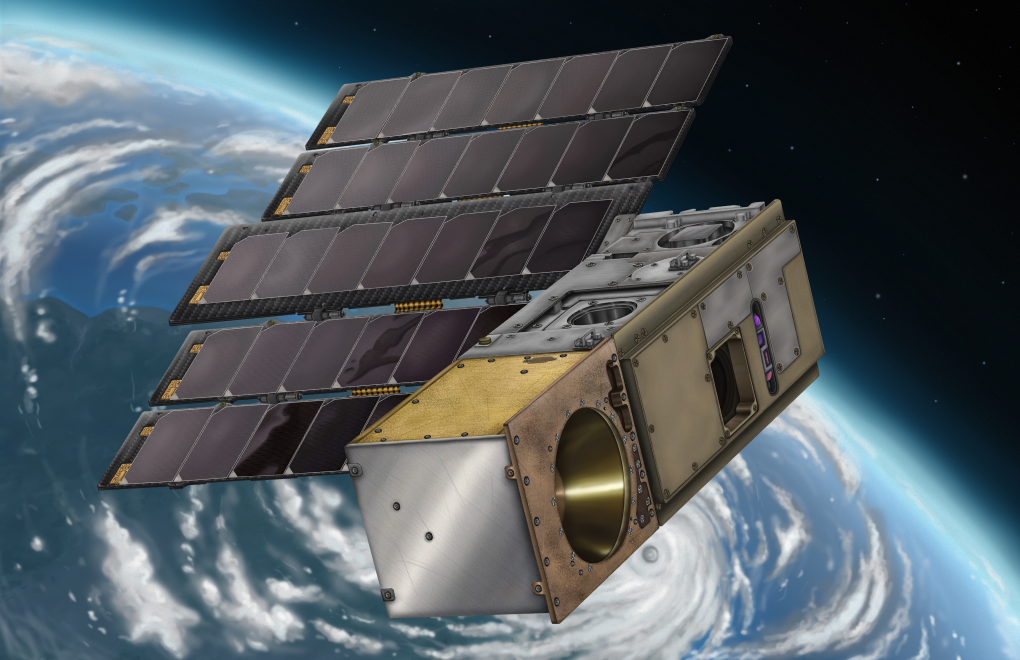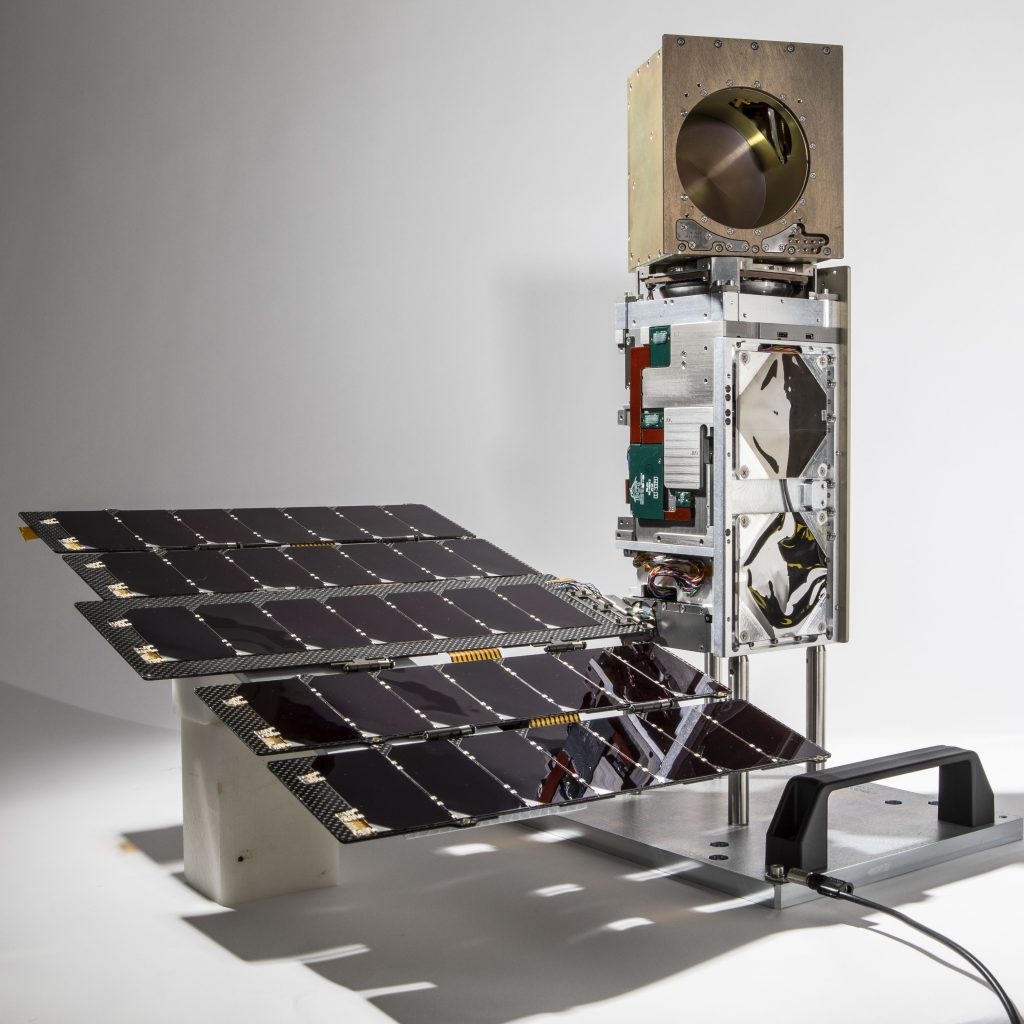
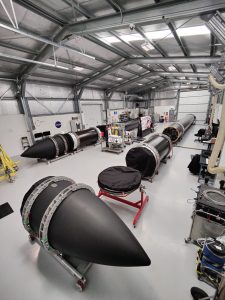
A NASA constellation of four storm tracking CubeSats are getting a new launch location as they prepare to study tropical cyclones beginning in the 2023 Atlantic hurricane season. NASA’s Time-Resolved Observations of Precipitation Structure and Storm Intensity with a Constellation of SmallSats (TROPICS) will observe the atmosphere to increase our understanding of hurricanes, typhoons, and other intense weather.
Rocket Lab has announced the mission now will be sent into orbit on two Electron rockets – each carrying two TROPICS CubeSats – from Launch Complex 1 in Mahia, New Zealand in May to maintain the target launch window in time for this year’s hurricane season.
Each launch, traveling to separate orbital planes, will place a pair of the small satellites in orbit to increase the frequency in which tropical cyclones are measured from space. The TROPICS constellation enables researchers to monitor the evolution of tropical cyclones with a frequency of about once per hour as compared to currently only once every 6 hours. Each TROPICS satellite is an identical 3U (1U, or unit = 10cm x 10cm x 10cm) CubeSat that is about the size of a loaf of bread and weighs about 12 pounds.
The TROPICS team is led by Dr. William Blackwell at Massachusetts Institute of Technology’s Lincoln Laboratory in Lexington, Massachusetts, and includes researchers from NASA, the National Oceanic and Atmospheric Administration (NOAA), and several universities and commercial partners. NASA awarded the launch services to Rocket Lab in November 2022, as part of the agency’s Venture-class Acquisition of Dedicated and Rideshare (VADR) launch services contract.
Quelle: NASA
----
Update: 7.05.2023
.
NASA, Rocket Lab Update Launch Coverage for Tropical Cyclones Mission
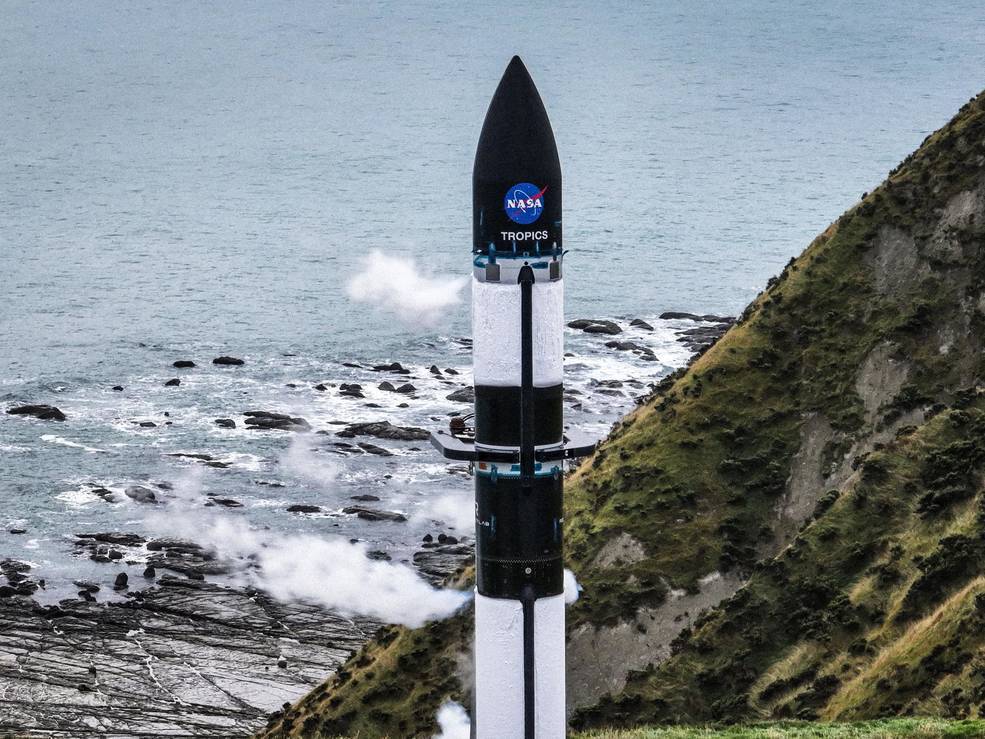
After the previous launch target date changed due to weather conditions in New Zealand, NASA and Rocket Lab are now targeting 9 p.m. EDT Sunday, May 7, (1 p.m. Monday, May 8, New Zealand Standard Time), to launch two storm tracking CubeSats into orbit.
The agency’s TROPICS (Time-Resolved Observations of Precipitation structure and storm Intensity with a Constellation of Smallsats) mission has a two-hour launch window from Launch Complex 1 Pad B in Māhia, New Zealand.
Rocket Lab will provide live coverage beginning approximately 20 minutes before launch. Coverage will air on NASA Television, the NASA app, the agency’s website, and Rocket Lab’s website.
A second launch from Rocket Lab will carry two additional CubeSats, with exact launch times contingent on the date and time of the first launch. TROPICS is a constellation of four identical CubeSats designed to observe tropical cyclones from low Earth orbit, making observations more frequently than current weather tracking satellites. Gathering data more frequently can help scientists improve weather forecasting models.
TROPICS will study tropical cyclones as part of NASA’s Earth Venture Class missions, which select targeted science missions to fill gaps in our overarching understanding of the entire Earth system.
Full coverage of this mission is as follows (all times Eastern):
Sunday, May 7
Approximately 8:40 p.m. – Live launch coverage begins
9 p.m. – Launch window opens
NASA website launch coverage
Follow countdown coverage on NASA’s launch blog for live updates beginning no earlier than 8 p.m. as the countdown milestones occur. On-demand streaming video and photos of the launch will be available shortly after liftoff on Rocket Lab’s website and Flickr. Imagery also is available on the NASA website.
Quelle: NASA
----
Update: 8.05.2023
.
Launch of Cyclone-Tracking TROPICS CubeSats from New Zealand
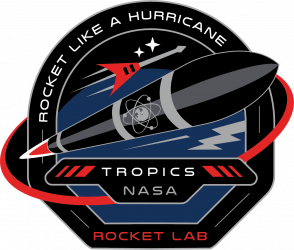
Launch of NASA’s Time-Resolved Observations of Precipitation structure and storm Intensity with a Constellation of Smallsats (TROPICS) mission is now targeted for 9 p.m. EDT, Sunday, May 7 (0100 UTC, Monday May 8) from Rocket Lab’s Launch Complex-1 in Māhia, New Zealand. NASA and Rocket Lab will launch two CubeSats into orbit for the TROPICS (Time-Resolved Observations of Precipitation structure and storm Intensity with a Constellation of Smallsats) mission. TROPICS is a constellation of four identical CubeSats designed to observe tropical cyclones from low Earth orbit, making observations more frequently than current weather tracking satellites. A second launch from Rocket Lab will carry two additional CubeSats, with exact launch times contingent on the date and time of the first launch.
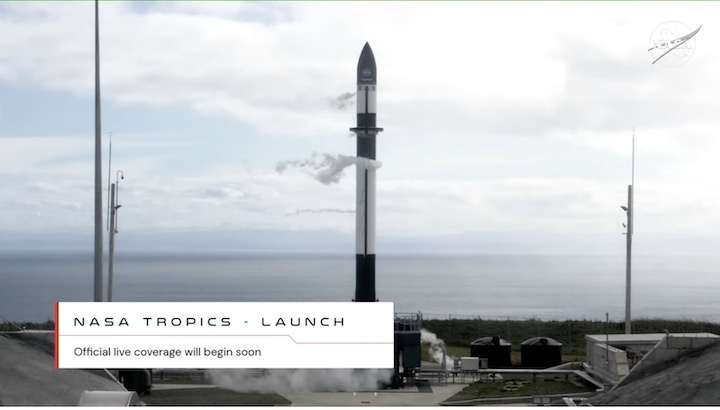
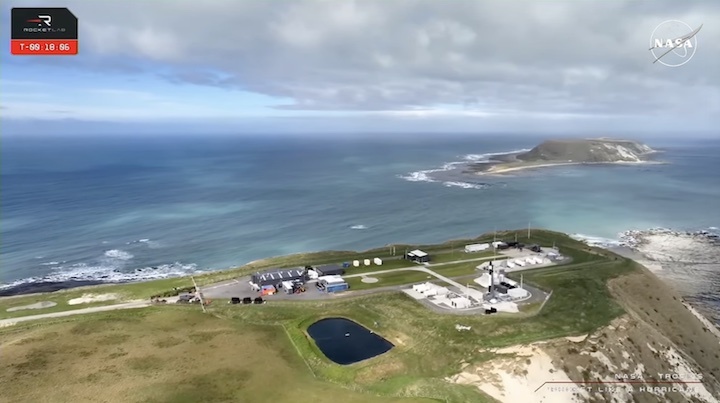
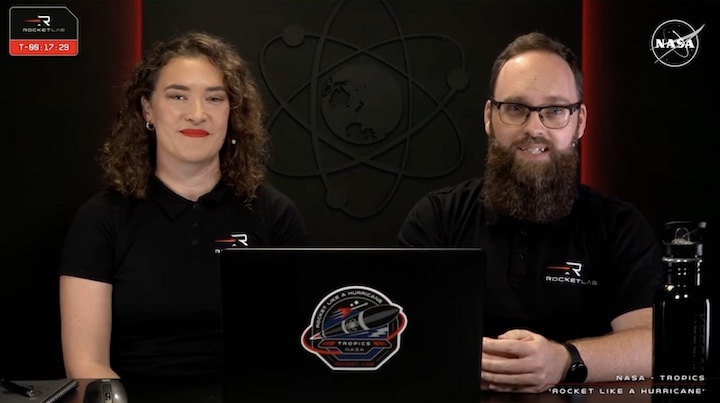
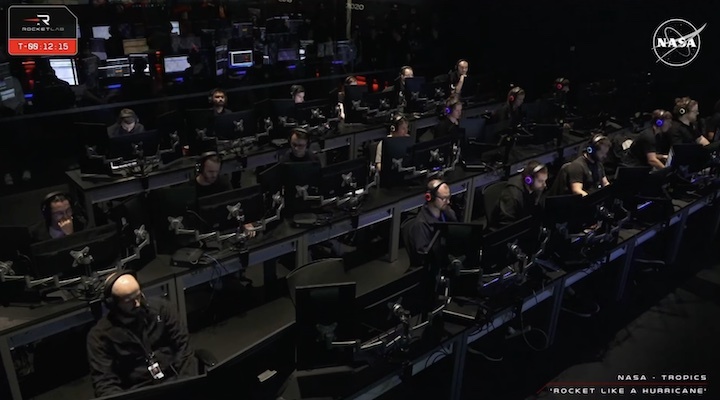
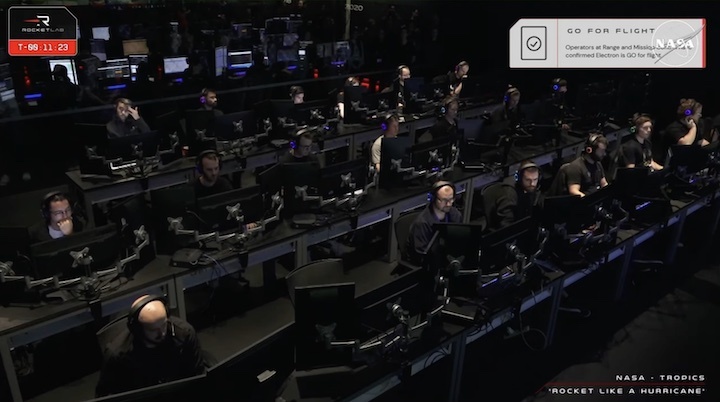
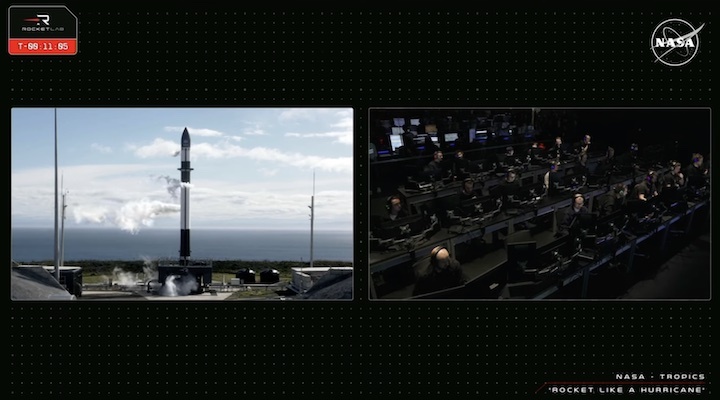
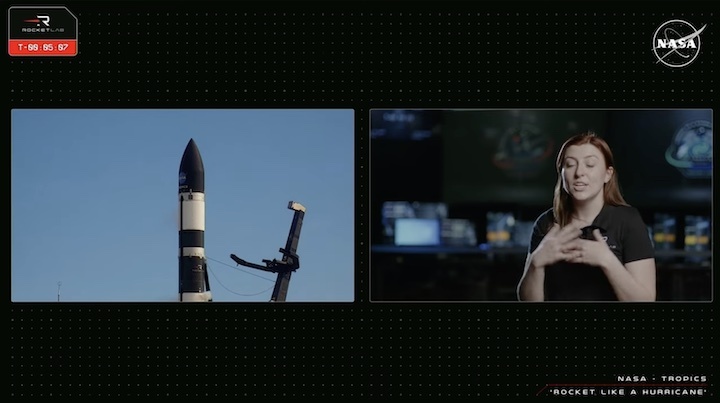
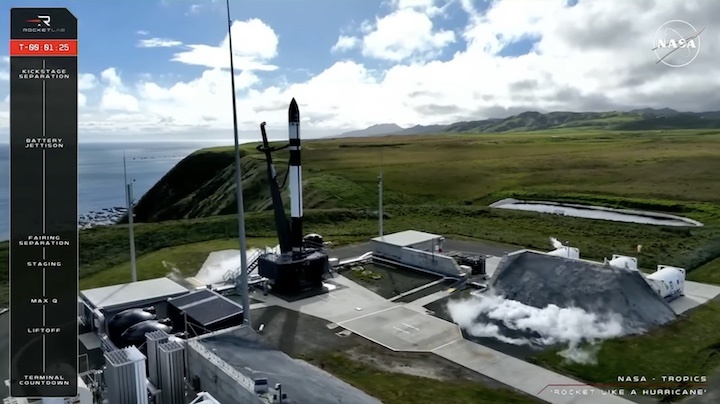
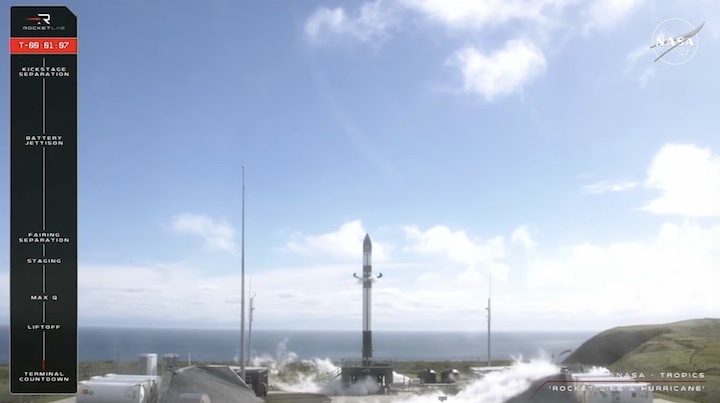
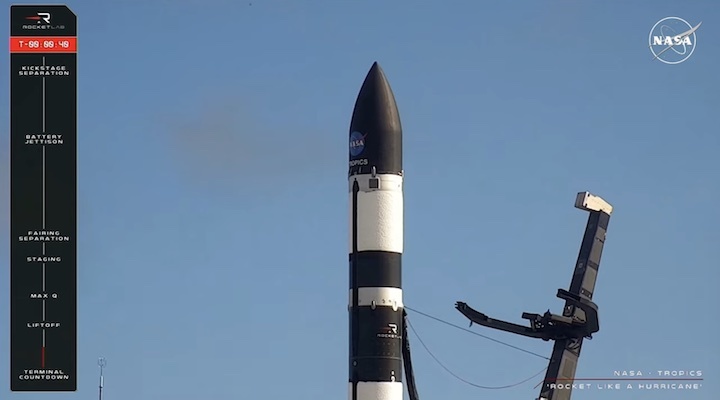
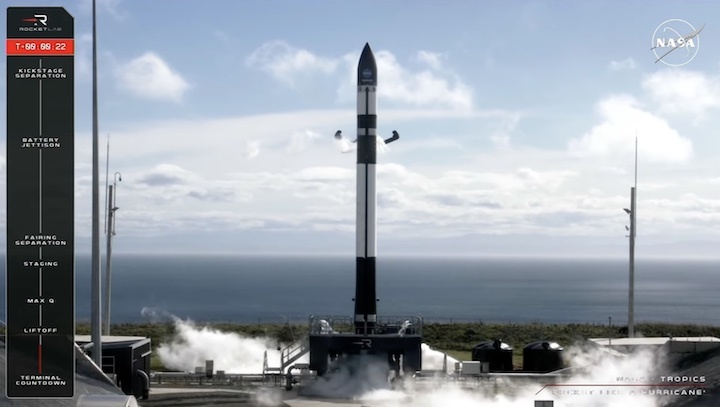
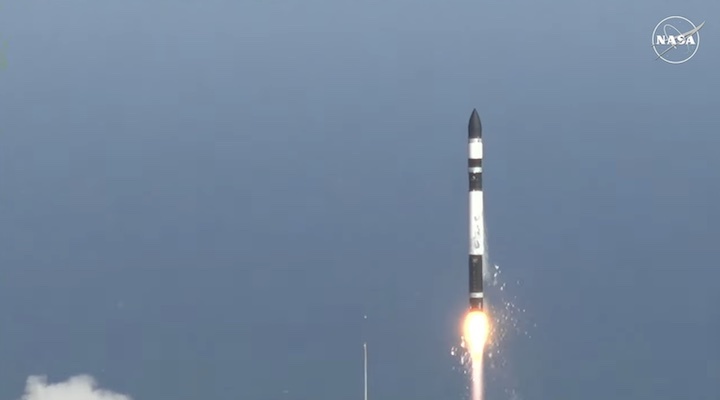
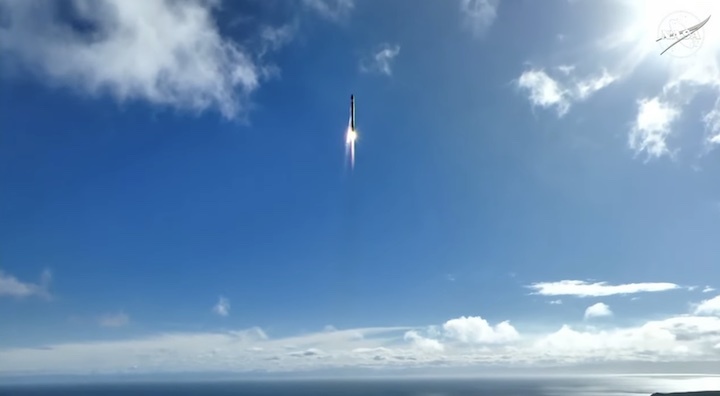
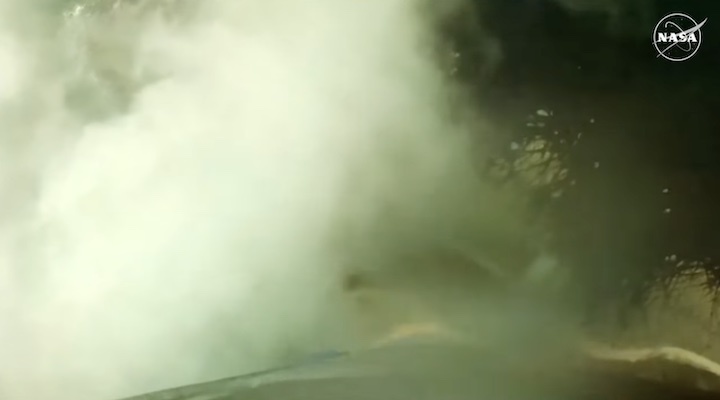
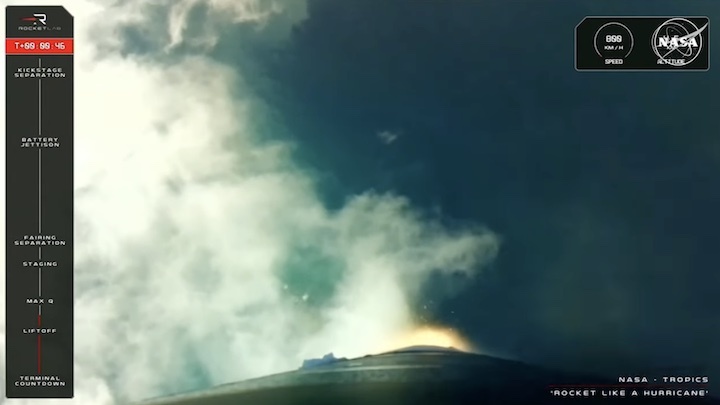
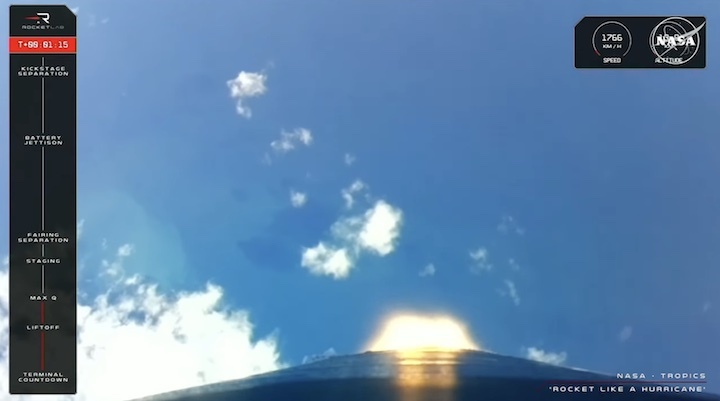
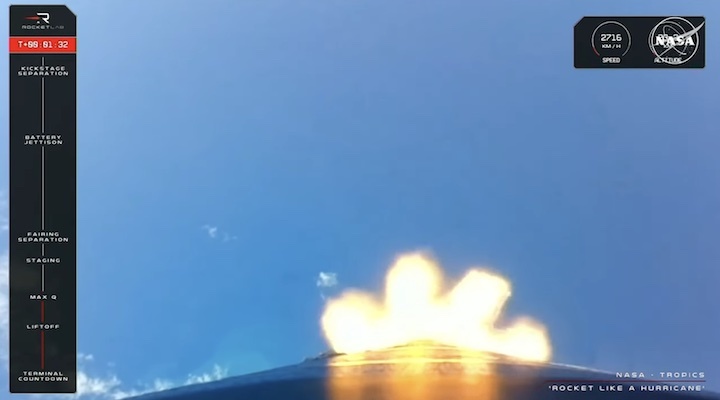
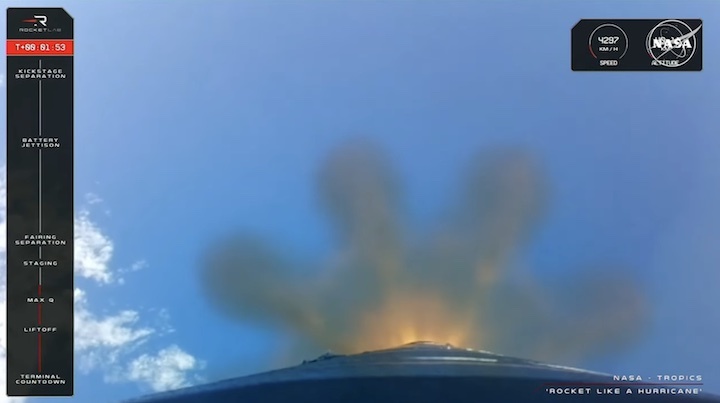
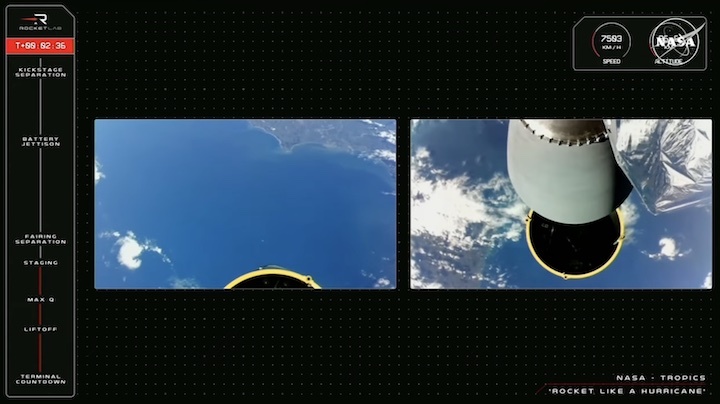
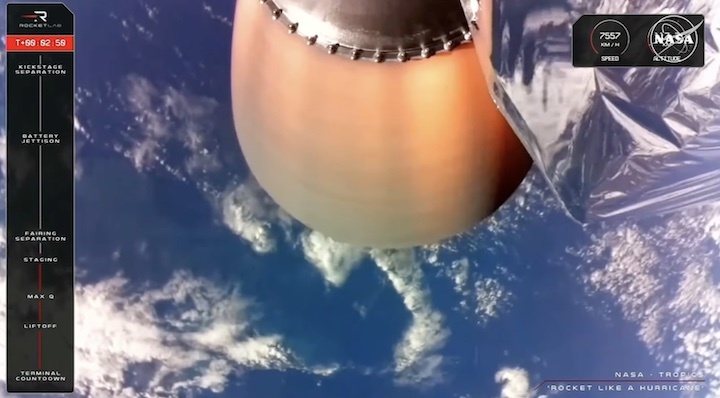
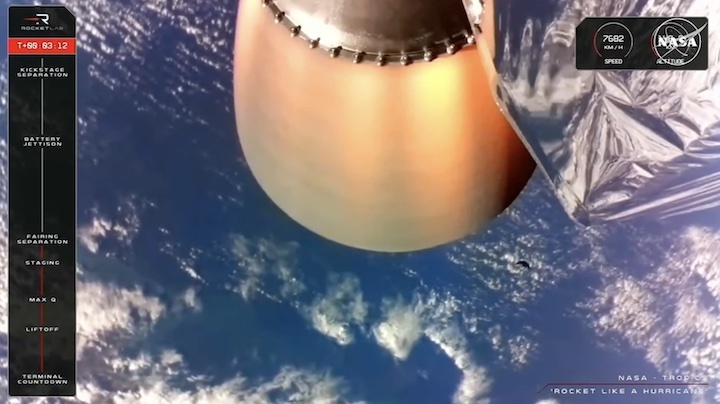

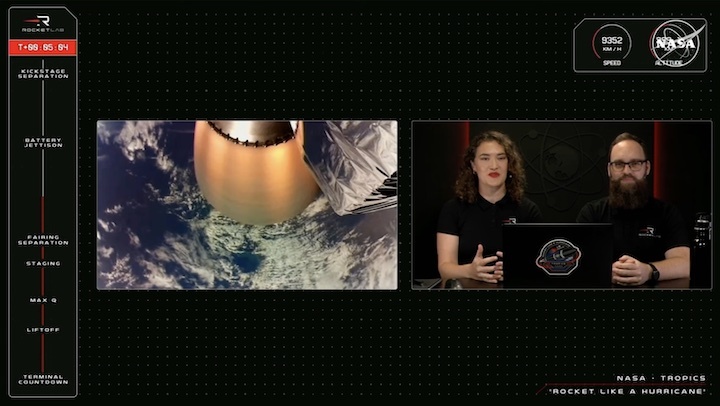
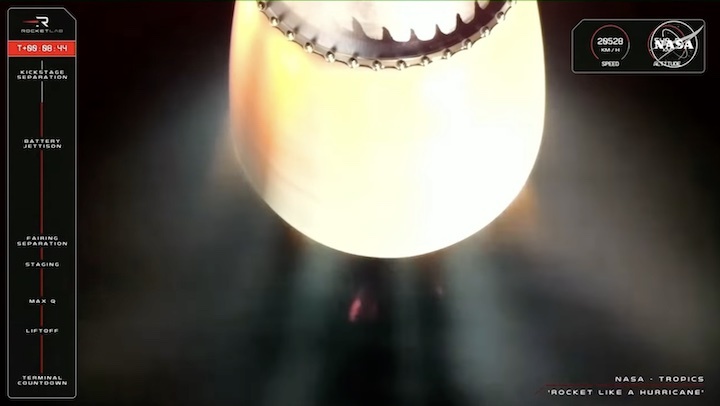
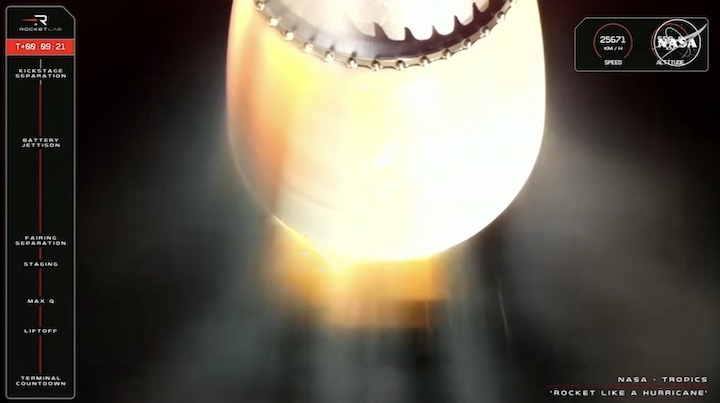
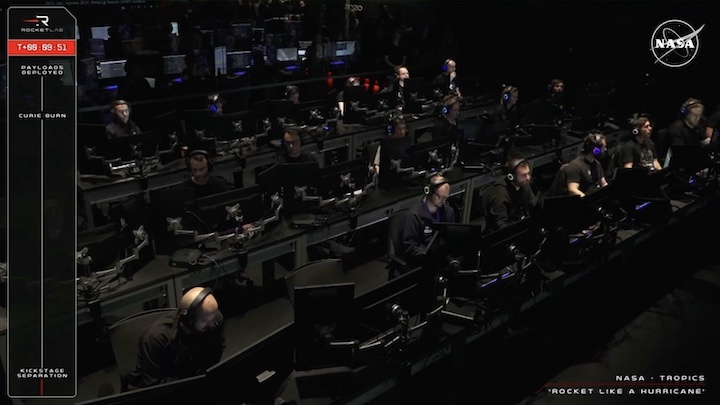
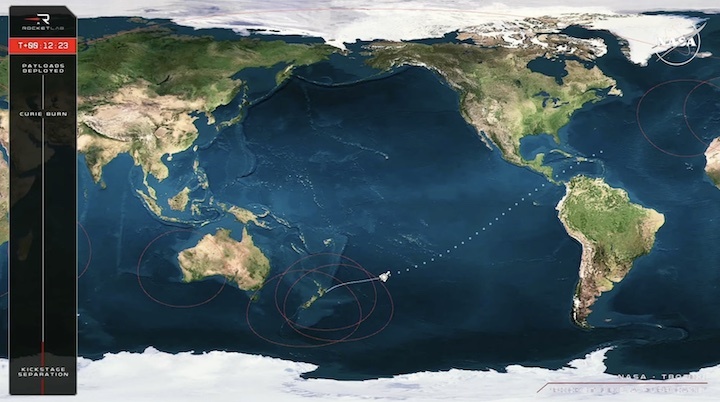
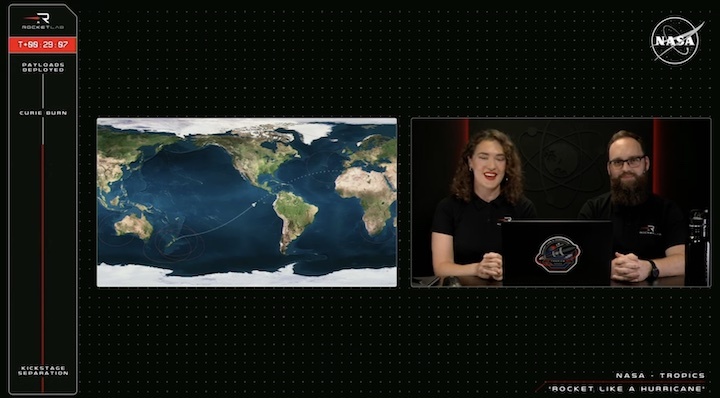
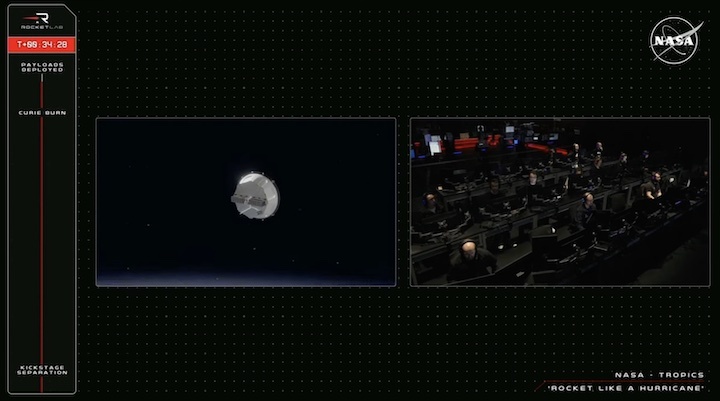
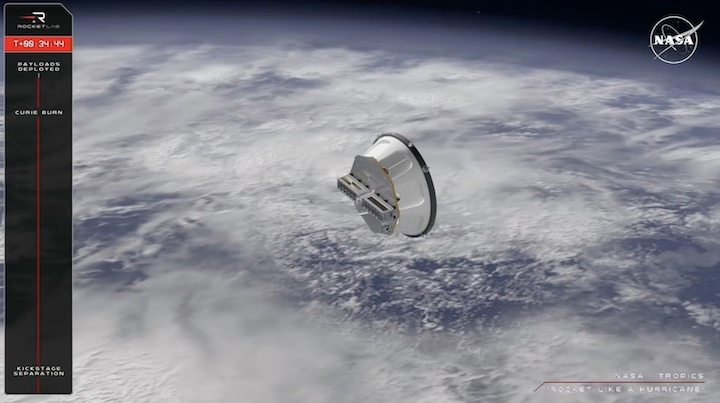
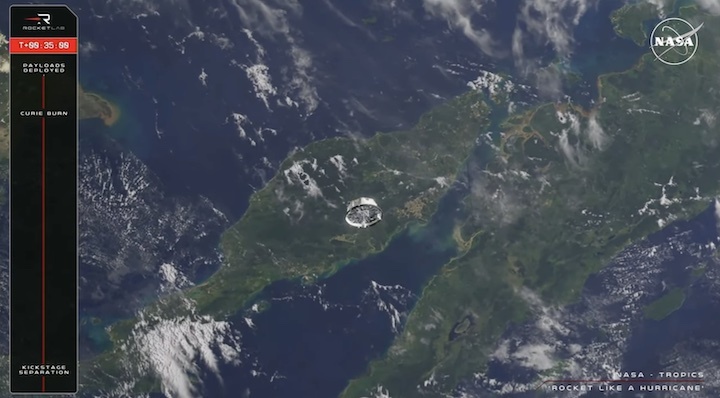
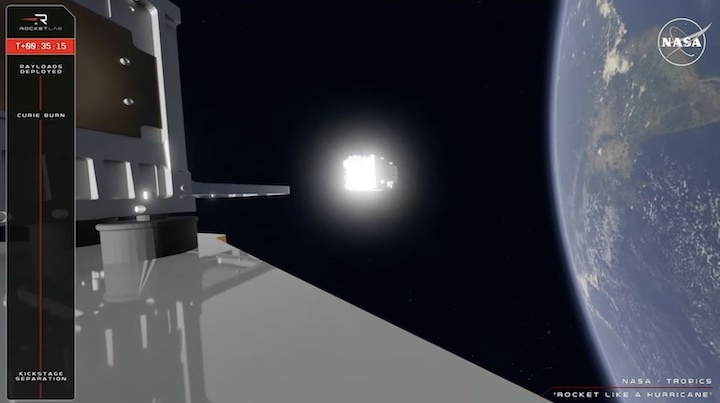
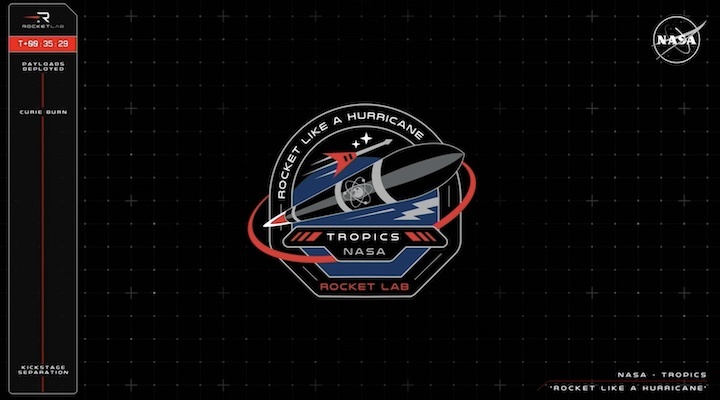
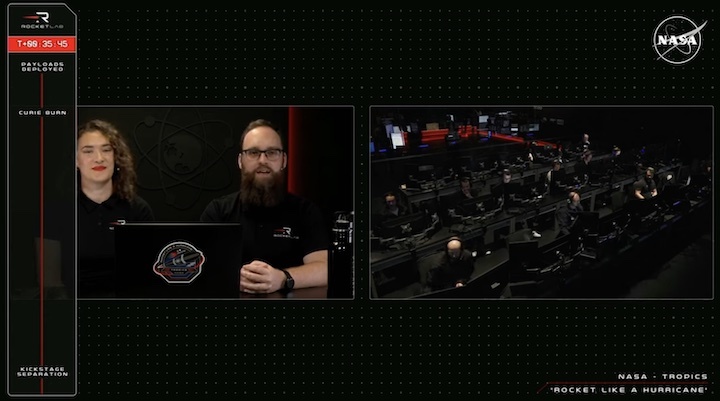
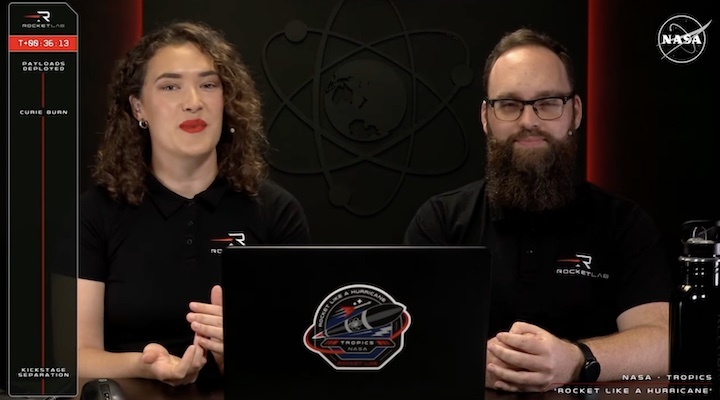
Quelle: Rocket Lab


